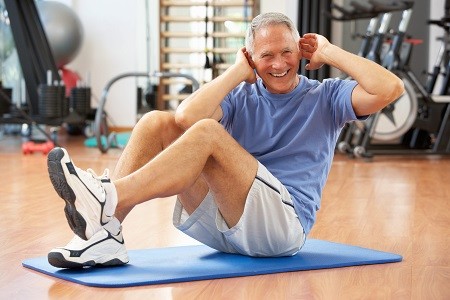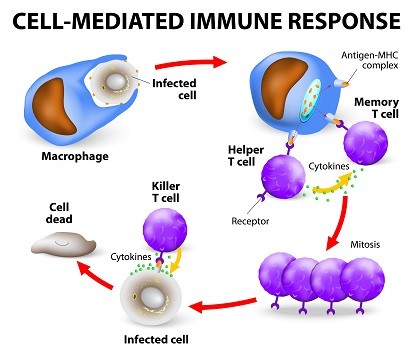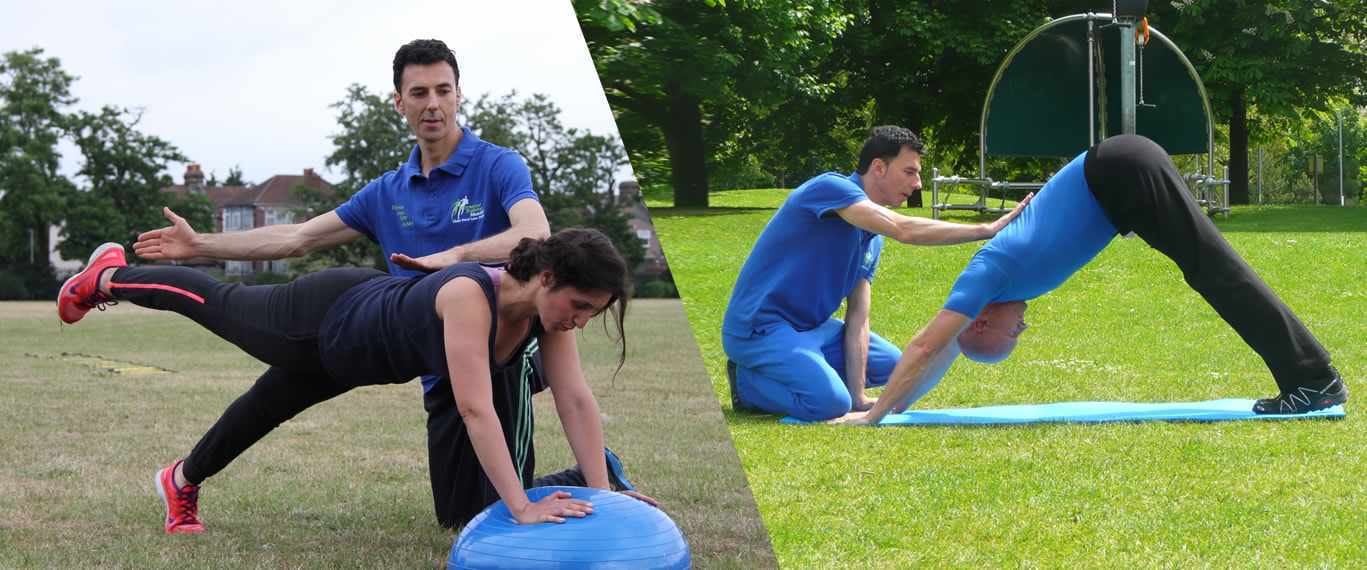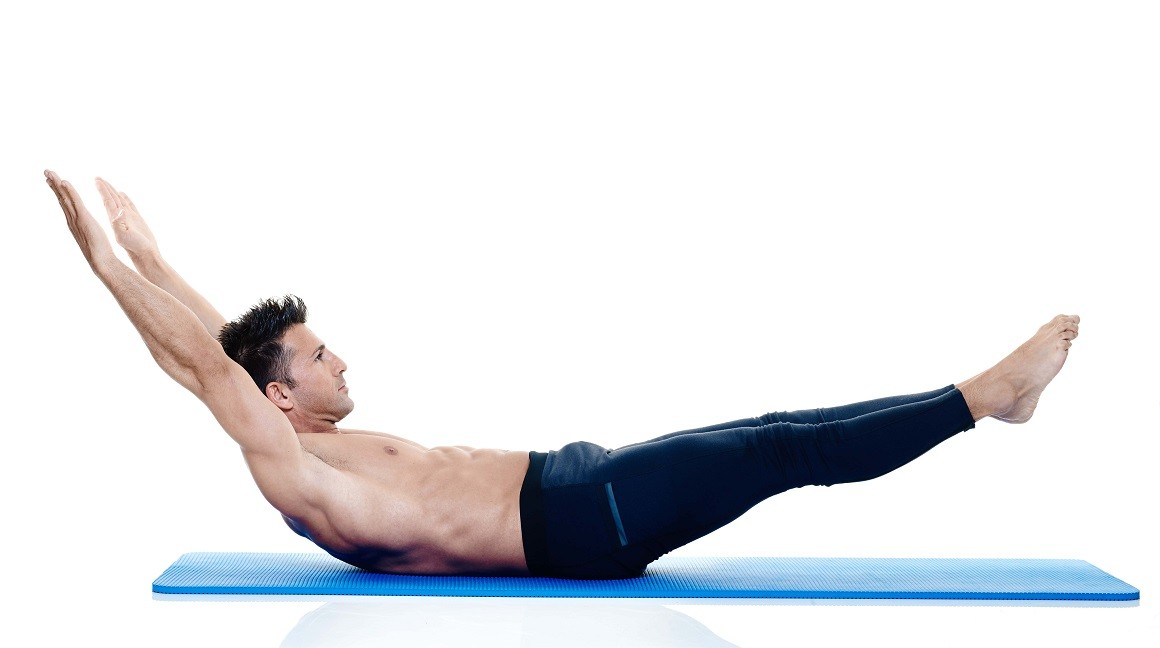One approach to successfully achieve your anti-ageing goals is to tailor your exercise, nutrition and stress management programme to enhance your body’s cellular performance and repairing abilities. This multi faced approach will enhance your physical and mental performance, rejuvenate your body tissues and help you to recover much faster after exercise, sports, injuries and surgeries.
Carefully customised exercise programmes activate your lymphatic drainage, helping you to successfully cleanse out toxins, improving hormonal make up, reducing body inflammation and strongly promoting cellular energy, vitality and longevity.
When you exercise you lower cholesterol levels, improve nutrients transportation to the cells, insulin sensitivity and other specific cellular functions.
Your metabolism, immune and system hormonal improves.
Therefore, you will start to lose weight fast, experience less anxiety, depression and improve your mood.

You will also start to reverse overweight and age related health conditions (i.e. diabetes type 2, high cholesterol and heart disease) learning how to integrate exercise and nutrition to fight oxidative stress and keep the extra weight off.
If you want to transform your body and you are enjoying reading evidence based exercise, and health topics this article is for you.
Here is my 2nd part of the “Anti Ageing Complete Body Transformation”.
Anti-Ageing Exercise are increasing your Energy Production, Effective Weight Loss, Aid Nutrients Replenishing, Recovery, and Better Skin Texture
1. Exercise
Anti Inflammatory and Immunosuppressive
- Decreases stress via the release of endorphins. Exercise has been used as a form of therapy to treat symptoms of stress and anxiety as it stimulates the production of endorphins4,9.
When individuals are stressed, cortisol is produced, which can impair sleep, hormone regulation, as well as both immune and cognitive function.
Exercise has been shown to combat such stress-associated symptoms by producing endorphins, which stimulate the opioid receptors and help to alleviate stress-related symptoms.
- Brain derived neurotrophic factor (BDNF) effects. BDNF is induced by exercise, and has been shown to stimulate neurological repair and protect against DNA damage10.
In particular, this is thought to be one of the mechanisms by which exercise is able to reduce inflammation in the brain and protect against the development of dementia and other age-related cognitive diseases.
- Alleviates symptoms of depression. Exercise is often prescribed for patients with mental health issues, such as depression because it decreases the level of inflammation in the brain, thereby regulating hormone secretion, increases endorphin production and overall cognitive function2,4.

Would you like to reverse the clock, feel fit and be at your best?
Contact us now by clicking on this link for a committment free consultation today.
- People who exercise have better sleep quality. Adequate sleep is required to ensure adequate cellular repair, avoid increased cortisol levels, enhance immune function, regulate hormone secretion and manage weight.
It has been shown that individuals who exercise have better overall sleep quality, which is associated with a lower risk of age-related diseases, such as dementia, cancer, obesity and type 2 diabetes1.
- Weight management/ treatment for individuals with type 2 diabetes. Exercise when used in conjunction with dietary changes can be used to achieve weight-loss and reverse insulin sensitivities observed individuals with type 2 diabetes12. Fat tissue is highly pro-inflammatory, which causes several obesity-related conditions.
Such inflammation is decreased with a reduction in body weight and the other anti-inflammatory properties of exercise.
- Addiction management. Since exercise stimulates the opioid receptors, it is often used as a conjunctive therapy for individuals undergoing drug rehabilitation4.
- Cancer prevention. Exercise can protect against cancer by decreasing the level of systemic inflammation in the body7. This is achieved by regulating the production of inflammation-inducing genes in the body.
Less cellular damage caused by inflammation decreases the number of cellular divisions and the risk of cancer development.
- Autoimmunity. It has been found that several autoimmune conditions (e.g., rheumatoid arthritis), which are caused by excessive inflammation can be improved and treated, at least partially, with exercise.
Since exercise reduces the overall level of inflammation in the body, symptoms are often reduced or prevented in individuals who exercise3.
- Reduces Cellular Damage. Cellular damage caused by toxins or inflammation results in increased cellular division, DNA damage and oxidative stress. Such issues can lead to the development of cancer or other age-related conditions (e.g., dementia).
Exercise has been found to reduce oxidative stress, thus reducing the immune activation caused by such cellular damage, promoting cellular survival8, 6.
Switch On and Off Your Immunity with Customised Exercise
- Immune enhancing
- Increases the movement of lymph throughout the body: 1) promotes waste excretion; and 2) enhances immune surveillance of potential pathogens3.
- Increases circulation/blood flow to peripheral tissues
- By decreasing low level immune activation caused by chronic inflammation, the immune system is able to mount a more effective immune response to pathogens and cancerous cells.
- Exercise activates the inflammatory response in the skeletal muscles. Depending on the intensity of exercise, muscles can become torn and need to be repaired.
Such inflammation is required to repair the muscle and attracts fluid and immune cells to the needed regions3.

- Exercise stimulates bone growth due to increased muscle contraction. In response to increased muscle growth, new bone must also be formed to support the increased activity.
Thus, individuals who exercise regularly are less prone to falls and bone-related injuries (e.g., hip fractures) due to increased bone density.
***The balance of both these immune enhancing and suppressive effects will promote longevity and delay signs of aging.
Negative impact on aging:
- Exercise without recovery. Strenuous exercise without the aid of proper recovery results in injury, excess inflammation and damage to the tissues and skeletal structures (e.g., hip, knee, etc.).
- Stress on body due to compression or high-impact activities. Proper recovery techniques are required to avoid unnecessary damage.
For example, massages, stretching, adequate sleep and cold or hot therapy (e.g., cryotherapy and Epsom salt baths).
- Over-exercise. Individuals who over-exercise are associated with heightened levels of inflammation and increased cortisol levels in the body, which impede the benefits of exercising.
Exercise is a form of stress on the body and over-exercising can place excess stress on the body to the point where it becomes detrimental.
One example is marathon or ultramarathon runners16.
These individuals frequently exhibit suppressed immune function following a marathon16.
Research indicates that such individuals are more prone to infections, especially respiratory infections, exhibit impaired antimicrobial activity, and experience a decline in immune cell functionality following a race or extremely long period of endurance exercise16.
Would you like to reverse the clock, feel fit and be at your best?
Contact us now by clicking on this link for a committment free consultation today.

Jazz in training with his clients.
- Mental health and inflammation. The crosstalk/interplay between the neurological and immune system is becoming increasingly understood.
Inflammation is being linked to variety of neurological/mental health disorders (e.g., depression and dementia).
Indeed, patients who go on immunosuppressive drugs experience an alleviation in symptoms of depression2,4.
Moreover, exercise is often recommended as a conjunctive treatment for patients with depression.
- Obesity. Increased inflammation is often observed in individuals with obesity. Other complications (e.g., metabolic syndrome, diabetes, poor sleep quality, increased mental health issues) are associated with the increased inflammatory response associated with higher levels of fat tissue12,13.
Since exercise promotes the metabolism of fat and assists with weightless, obesity and obesity-related conditions can often be reversed with exercise.

- Cellular Damage. Cellular damage can be caused by exposure to chemicals in the environment, eating inflammatory foods and chronic inflammation.
Such cellular damage causes premature ageing by inducing cellular division and shortening the lifespan of the cells, while also increasing the risk of developing cancer11,8.
Exercise combats cellular damage by decreasing inflammation, as well as minimising oxidative stress.
- Stress-induced Immune Suppression. Stress is associated with increased cortisol levels in the body.
Cortisol is an immunosuppressant, and prolonged cortisol secretion can lead to disturbances in sleep, hormone dysregulation and weight gain.
Thus, customised exercise can combat stress by promoting sleep quality and decreasing feelings of stress by the production of endorphins4,9.
Would you like to reverse the clock, to feel fit and be at your best?
Contact us now by clicking on this link for a committment free consultation today.
- Hormone imbalances. Excessive weight, inflammatory foods and other chronic conditions are often associated with hormone imbalances, which impair immune function, cause weight gain, promote insulin resistance, and impede cognitive function3,13.
Exercise combats these issues by regulating hormone secretion and promoting weight loss.
Personalised anti ageing personal training programmes are decreasing the signs of ageing by reducing oxidative stress, which can lead to the development of cancer and dementia.
Cellular damage often results in DNA damage, which can lead to genetic mutations, promoting the development of cancerous cells.
DNA damage has also been linked to the neurological damage associated with age-related cognitive diseases, such as dementia and Alzheimer’s disease.
Carefully designed fitness programmes by the best personal trainer in London Jazz Alessi, will help you protecting against such cellular damage and stimulates brain-derived neurotrophic factor, which stimulates neurological repair and enhances cognitive functions and memory.
CUSTOMISED ANTI-AGEING PERSONAL TRAINING PROGRAMME BY JAZZ ALESSI
An anti-ageing exercise plan may be daunting as it may be unclear as to where to start, which exercises to focus on, and how to exercise with specific health problems.
One method of making this process easier is to follow a customised exercise training plan.
Jazz Alessi is a leading exercise specialist with over 20 years of extensive experience in creating anti-ageing exercise plans and helping clients achieve their goals.
He provides customised exercise and nutrition plans based on individual body type and health requirements.
Jazz Alessi’s customised exercise plan includes a detailed fitness analysis, advanced video movement analysis that assesses each client’s current fitness level, injuries, health conditions and goals.
He will then provide a customised exercise and nutrition plan with appropriate anti-ageing macronutrients, micronutrients, Pilates, Yoga, body conditioning exercise programme.

Any health issues specific to each client will also be considered, and Jazz Alessi will provide continued support throughout the entire process.
Would you like to reverse the clock, to feel fit and be at your best?
Contact us now by clicking on this link for a committment free consultation today.
References
- Buman, Matthew P. et al. (2011). “Exercise Effects on Night-to-Night Fluctuations in Self-Rated Sleep among Older Adults with Sleep Complaints.” Journal of sleep research 20.1 Pt 1: 28–37.
- Firth, Joseph et al. (2016). “The Effects and Determinants of Exercise Participation in First-Episode Psychosis: A Qualitative Study.” BMC Psychiatry 16: 36. PMC. Web. 24 Dec. 2017.
- Gomes E.C., Florida-James G. (2016) Exercise and the Immune System. In: Esser C. (eds) Environmental Influences on the Immune System. Springer, Vienna.
- Hildebrandt et al. (2014). Exercise reinforcement, stress, and β-endorphins: An initial examination of exercise in anabolic–androgenic steroid dependence. Drug and Alcohol Dependence. 139: 86-92.
- Jeon, Yong Kyun, and Chang Ho Ha. (2017). “The Effect of Exercise Intensity on Brain Derived Neurotrophic Factor and Memory in Adolescents.” Environmental Health and Preventive Medicine 22: 27. https://www.ncbi.nlm.nih.gov/pmc/articles/PMC5664787/
- Kruger et al. (2017). Exercise training reverses inflammation and muscle wasting after tobacco smoke exposure. Am J Physiol Regul Integr Comp Physiol. Nov. 1 [Epub ahead of print].
- Liss, Michael et al. (2017). “Physical Activity Decreases Kidney Cancer Mortality.” Current Urology 10.4:193–198.
- Radak, Zsolt et al. (2013). “Oxygen Consumption and Usage During Physical Exercise: The Balance Between Oxidative Stress and ROS-Dependent Adaptive Signaling.” Antioxidants & Redox Signaling 18.10: 1208–1246.
- Schwarz and Kindermann. (1992). Changes in β-Endorphin Levels in Response to Aerobic and Anaerobic Exercise. Sports Medicine. 13(1): 25-36.
- Whiteman, Andrew et al. (2014). “Interaction between Serum BDNF and Aerobic Fitness Predicts Recognition Memory in Healthy Young Adults.” Behavioural brain research 259: 302–312.
- Yang, Jeng-Lin. (2014). BDNF and Exercise Enhance Neuronal DNA Repair by Stimulating CREB-Mediated Production of Apurinic/Apyrimidinic Endonuclease 1. NeuroMolecular Medicine. 16(1): 161-174.
- Colberg, et al. (2010). Exercise and Type 2 Diabetes: The American College of Sports Medicine and the American Diabetes Association: joint position statement. Diabetes Care, 33(12), e147–e167. http://doi.org/10.2337/dc10-9990
- Garatachea et al. (2015). Exercise Attenuates the Major Hallmarks of Aging. Rejuvenation Research, 18(1), 57–89. http://doi.org/10.1089/rej.2014.1623
- Rogerson et al. (2016). Influences of Green Outdoors versus Indoors Environmental Settings on Psychological and Social Outcomes of Controlled Exercise. International Journal of Environmental Research and Public Health, 13(4), 363. http://doi.org/10.3390/ijerph13040363
- Booth et al. (2012). Lack of exercise is a major cause of chronic diseases. Comprehensive Physiology, 2(2), 1143–1211. http://doi.org/10.1002/cphy.c110025
16. Smith, L. (2003). Overtraining, excessive exercise, and altered immunity: is this a T helper-1 versus T helper-2 lymphocyte response? Sports Med, 33(5): 347-64.
Disclaimer: This website and all its content is to be used for information purposes only. This website or any of its content or links to third parties does not diagnose, advise, treat or cure any ailments, illness or disease.
You agree to hold harmless the owner of this site for any action taken on your own without consulting your medical doctor first by using the information on the website for diagnostic, treatment, or any other related purposes. This is not medical advice. If you are suffering from any illness, disease or ailments please contact your doctor first and immediately.



